

Introduction
The village of Eugowra, which is located 39 kilometres west of Forbes, in the Shire of Cabonne, has been the source of granite and marble construction materials for a long time. Quarried in and around Eugowra, the Eugowra Granite is also known by its commercial name of ‘Carmina Grey’.
Eugowra Granite is on prominent display at Australia’s Parliament House, and has been used in many aspects of this building including the two sweeping curved structural walls, seen in the image below.
Geological overview
The Eugowra Granite formed from a large volume of molten minerals (magma) which have crystallised at considerable depth below the ground surface. This rock consists essentially of three minerals—black biotite, translucent quartz and white feldspar.
The Eugowra Granite is a roughly equant intrusive body, about 19 km across, which intrudes folded sedimentary rocks of the Late Silurian Moura Formation, as well as the Early Silurian Glenisla Volcanics. The reported age of the Eugowra Granite is 394 million years, which places the magma intrusion in the Early Devonian.
Indigenous context
The Eugowra Granite is found on the lands of the Wiradjuri people.
We welcome any advice of any recorded use of Eugowra Granite in traditional activities or of any cultural aspect of the terrain which contains this particular rock.
Modern history
Construction of a new Parliament House in Canberra began in 1981 and was completed in 1988. The principal design of the structure is based on the shape of two boomerangs and most people remember the grass roof topped by an 81 m flagpole. The two boomerang shaped walls are very striking as they are both 460 m long, 27 m maximum height, 3 m maximum width and covered by granite slabs.
The selection of this rock for Parliament House has an interesting story. It started when Italian-born Romaldo Giurgola, the Principal Architect of the project, visited the property of renowned Australian architect John Andrews at Eugowra. Romaldo cut his leg on a flat polished piece of the granite at the farm. He liked the rock, visited the Eugowra Granite Mill and as the hills around Eugowra abound with this granite, he was quoted as saying ‘this is just what we want for Parliament House’. His vision was for new Parliament House to have a connection with the natural environment and used natural stone to achieve this.
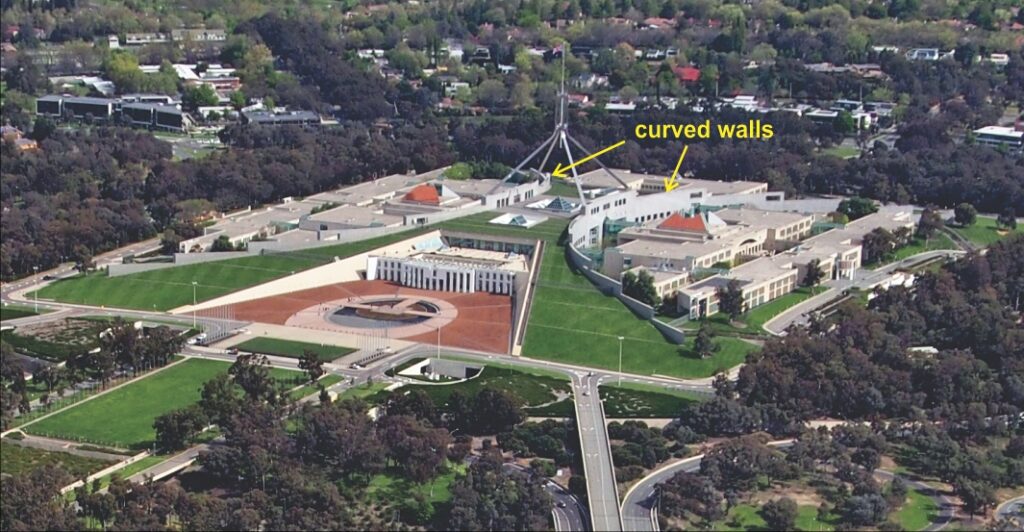
A total of 35 different types of rocks were used in Parliament House, coming from countries as distant as Italy, Brazil, Guatemala, India, China, Portugal, Greece and Norway (Meyer, 2009). Many of these are located in the spectacular entry hall of the building. However, by far the largest quantity of any one rock is Eugowra’s ‘Carmina Grey’ with a total of more than 24,000 cut slabs of this rock.
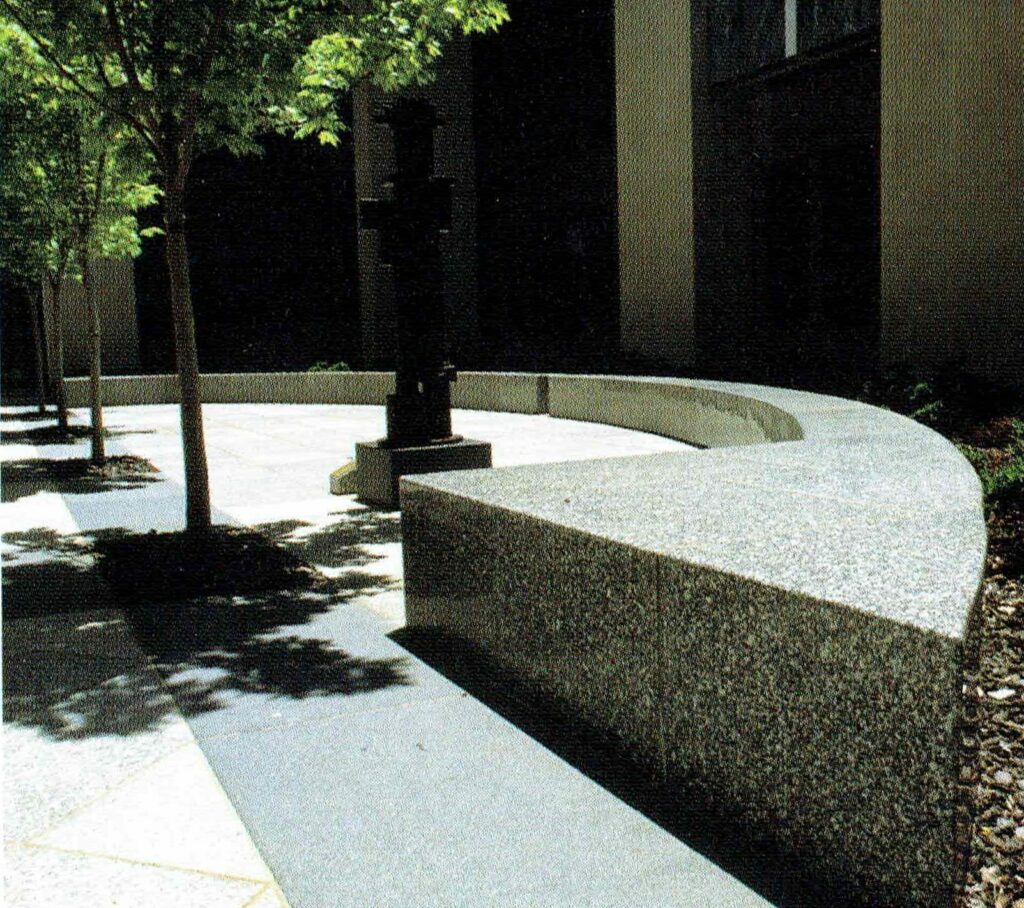
DID YOU KNOW?
A huge boulder of Eugowra Granite known as the Escort Rock, located 4 km north of Eugowra, was the site of Australia’s most famous gold robbery.
About 5 pm, on Sunday 15 June 1862, a Cobb & Co coach from Forbes, carrying a driver, a police escort of four and a large amount of gold, cash and other mail, was attacked at what is now known as Escort Rock. Frank Gardiner’s gang of bushrangers—Ben Hall and Johnny Gilbert among them—lay in wait behind large granite boulders of Eugowra Granite, after they had blocked the road with commandeered bullock wagons. This forced the coach to slow and, as it passed, the gang opened fire, wounding two of the police officers. The frightened horses bolted and the coach overturned. The bushrangers then ransacked the coach and made off with 2,719 ounces of gold and £3,700 in cash, packed on one of the coach horses. That much gold, most of which was never recovered, would be worth about A$11 million at today’s (December 2024) gold prices!
About the NRG specimen
Economic geologist Russell Meares AOM and the Eugowra Events & Tourism Association nominated the Eugowra Granite for inclusion in the NRG in mid-2021. The NSW Rock Selection Sub-Committee worked to secure the donation of a rock and funding to cover its transportation, and an 8.8 tonne block was delivered to Canberra in December 2022. The rock finally went on display in June 2024.
The block is roughly 1.4 m x 2.2 m x 0.8 m in size and lies on its long side. On the sides of the block are parallel, channel-like marks. These are the series of holes that were drilled to split the rock when it was quarried.
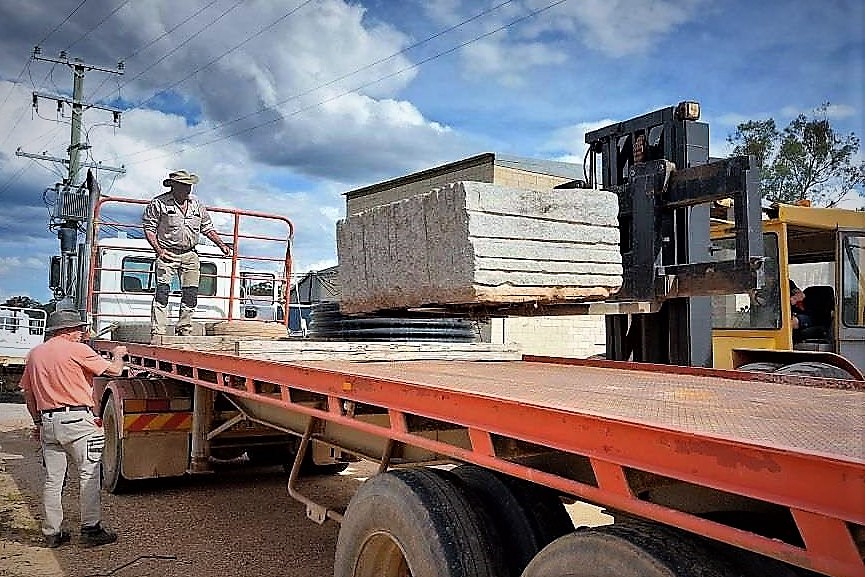
The Eugowra Granite currently sits in a temporary cluster at the National Rock Garden but will be moved to either the Construction Resources or Geoscience Knowledge cluster once Stage 2 is completed.
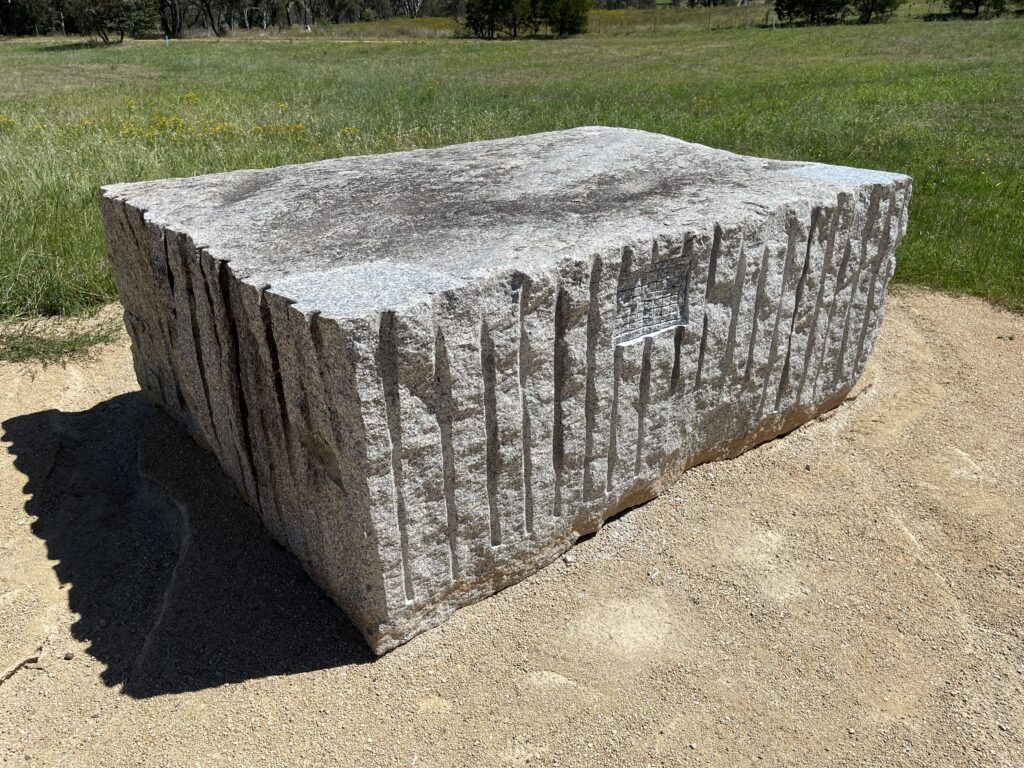
The Eugowra Granite will clearly illustrate to visitors to the National Rock Garden the composition of a granite rock. It consists essentially of three minerals—black biotite, translucent quartz and white feldspar—all of which can be clearly seen in the small polished section on the rock.
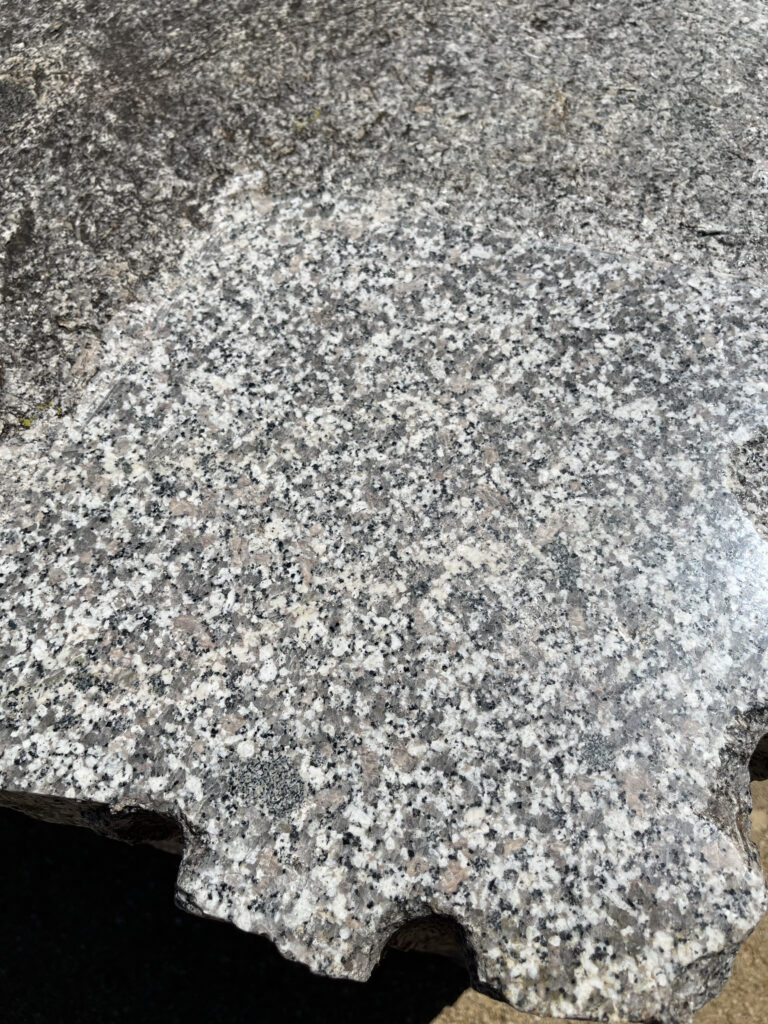
Tourism
Eugowra was devastated on the morning of 14 November 2022 by a flash flood that has been variously described as a ‘wall of water’ and ‘inland tsunami’. The NRG Steering Committee was saddened to hear of the loss of two lives and the destruction of numerous businesses and homes in the town.
The facilities at Central West Granite, donors of our rock, were substantially damaged by the flood which hit unexpectedly. The NRG is very happy to hear that the company is now back to full production.
Eugowra is recovering and we encourage all our readers to visit the town once the community has substantially recovered.
Acknowledgements
The Eugowra Granite was donated by Central West Granite Pty Ltd. A generous donation from Geological Society of Australia members Dr Jane Barron and Dr Larry Barron covered the costs of uplift, transportation, placement and preparation of the specimen for display.
Want to know more?
Meyer, W., 2009. Images in stone: a guide to the building stones of Parliament House. Published by the Geological Society of Australia, ACT Division, available at the Parliament House Shop.
Raymond, O.L., Duggan, M.B., Lyons, P., Scott, M.M., Sherwin, L., Wallace, D.A., Krynen, J.P., Young, G.C., Wyborn, D., Glen, R.A., Percival, I.G., Leys, M., 2001, Forbes, New South Wales, 1:250 000 Geology Sheet SI55-7 – Second edition, Australian Geological Survey Organisation and Geological Survey of New South Wales, 1v, Map.
Times Past Productions Chintola Pty Ltd 2002. A Big Country, A Contextual History of Cabonne. Prepared for Cabonne Shire Council, available at the website of Cabonne Shire Council.
Wyborn D., Turner, B.S., and Chappell, B.W., 1987. The Boggy Plain Supersuite: A distinctive belt of I-type igneous rocks of potential economic significance in the Lachlan Fold Belt. Australian Journal of Earth Sciences, Vol 34(1), 21–43. https://doi.org/10.1080/08120098708729392
Author
Mike Smith


